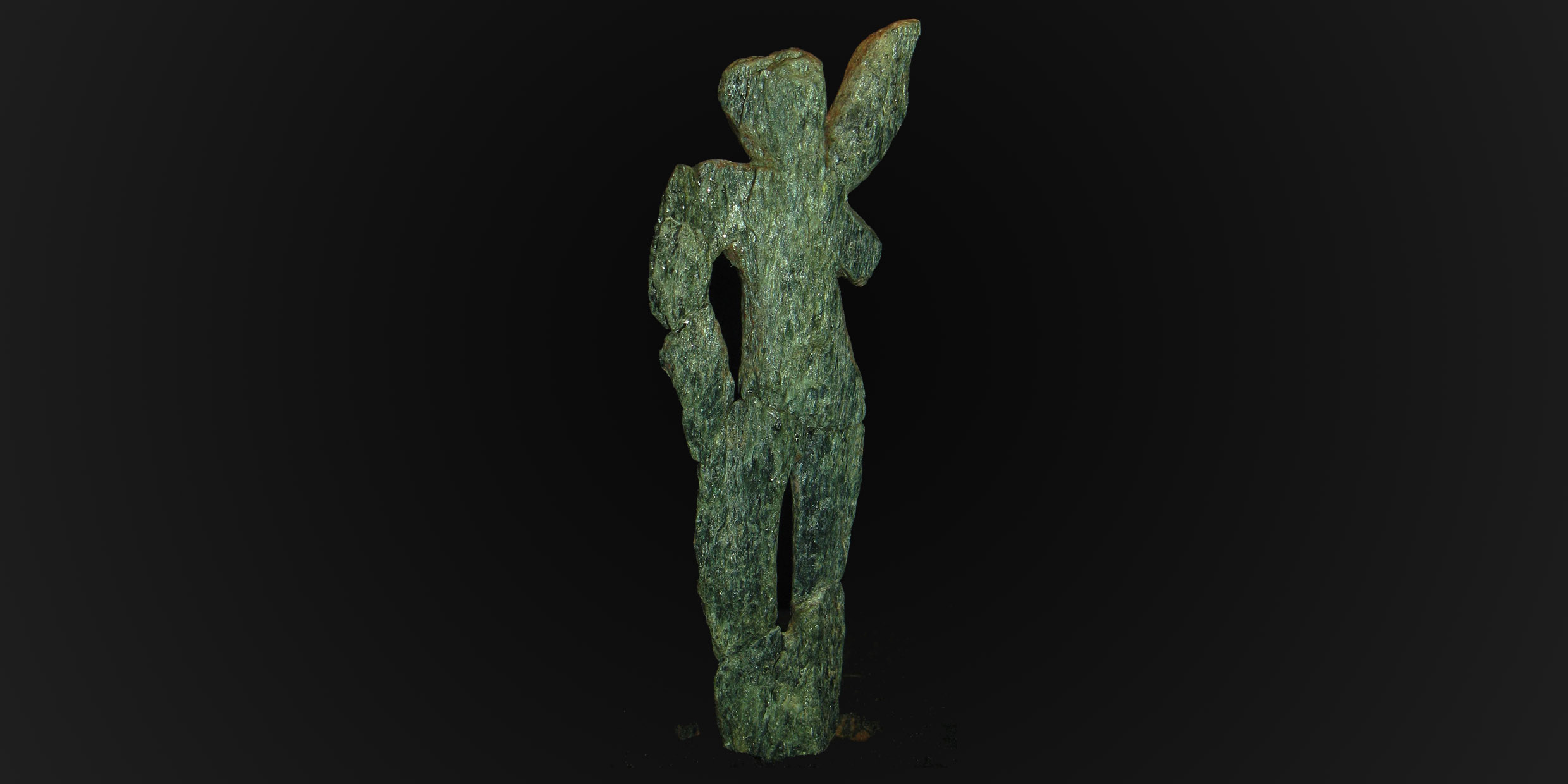Originally published 15 January 1990
From Austria comes word of one of the world’s earliest known sculptures, a female figurine, excavated from Ice Age sediments at Galgenberg, near Krems. This delightful artifact is about 3 inches tall and is carved from green serpentine stone. It has been dubbed the Dancing Venus of Galgenberg.
Paul Bahn reports on the discovery in a [November 1989] issue of Nature. According to Bahn, the Galgenberg site has previously yielded the bones of Ice Age animals, including reindeer and mammoths, together with charcoal and flint flakes. New excavations directed by archeologist Christine Neugebauer-Maresch tuned up the fragments of the figurine. Charcoal samples from the same layer of sediments have been carbon dated to 30,000 years ago.
The new statuette is lithe and saucily posed, a real pin-up among the many other female statuettes caved by our Cro-Magnon ancestors. More than 60 of these figurines, called Venuses by archeologists, have been discovered from France to Siberia. Not only is the Galgenberg Venus older than the others, but she differs from them in startling ways.
Thought to be fertility symbols
The typical Ice Age Venus is shaped in clay, or carved in stone or ivory. She is grotesquely rotund and rigidly symmetrical, with dropping breasts, bulging belly and exaggerated buttocks. The head and limbs are usually merely suggested by the sculptor as knobs or stumps. Most archeologists believe the Venuses were fertility symbols, or icons of a Mother Goddess revered by the Cro-Magnons as source of life and protector.
The Dancing Venus of Galgenberg is unique. Her head and limbs are carefully depicted, and even accented with openings in the stone. Her left arm is raised with the hand behind the head. She stands with her weight resting insouciantly on one foot, and the right hand is placed on the hip in a familiar Betty Grable pose. One breast is shown in profile, the other is carved in low relief.
Except for obvious limitations imposed by carving in stone with primitive tools, the Dancing Venus of Galgenberg might have stepped right out of a Hollywood poster. This is no Mother Goddess. She has definitely got sex appeal.
But where does she fit in the history of art?
In his book on feminine beauty, art historian Kenneth Clark states, “The discovery of feminine beauty, like so much else we value in civilized life, was made in Egypt in the second millennium B.C.” He is thinking, of course, of those lovingly rendered tomb paintings and sculptures of women that reached their culmination in the famous sculpted head of Queen Nefertiti. The Egyptians clearly valued the same kind of beauty that we might admire today on the cover of Vogue.
Standards of feminine beauty in Western art and culture have remained remarkably constant. A continuous ideal links Nefertiti to Greta Garbo, and the eye that admires the Venus of Botticelli might also appreciate Michelle Pfeiffer.
So who carved those grotesquely bulging Venuses of the Ice Age? Certainly not the same sort of artist who shaped the swan-like neck of Nefertiti. Nor anyone like the anonymous Greek sculptor of Venus de Milo, or the Velasquez who painted the Toilet of Venus.
Invention of beauty
Typical Ice Age Venuses are sexual but not sexy. They may have served some ritual purpose, but they certainly don’t appeal to the modern eye. So perhaps the Egyptians really did invent our idea of feminine allure. Or maybe it was already there in the Ice Age.
The Dancing Venus of Galgenberg is a first hint that Nefertiti or Michelle Pfeiffer might have been admired by the fur-clad mammoth hunters who lived at the edge of the ice. Granted, the figure is crude by standards of later art, but the feeling is there, the appreciation of feminine form — the turn of thigh, the curve of breast, the provocative pose.
Paul Bahn, author of the report in Nature, believes that the Dancing Venus must herself be the product of long practice. The artist demonstrated considerable skill in shaping the delicate and brittle stone. Two openings — under one arm and between the legs — show a proficiency at sculpting unknown in the later Venuses. The limbs are probably about as thin as the artist could carve them without making the figure unduly fragile.
The sophistication revealed in both technology and composition can only be the end-result of a long tradition in carving, perhaps of perishable materials.
The Dancing Venus of Galgenberg may not be the first female image in Western art, but she is the first we know about. And what we see is strikingly familiar — a real Ice Age Betty Grable. For better or worse, humans have apparently had a taste for cheesecake since the dawn of time.



